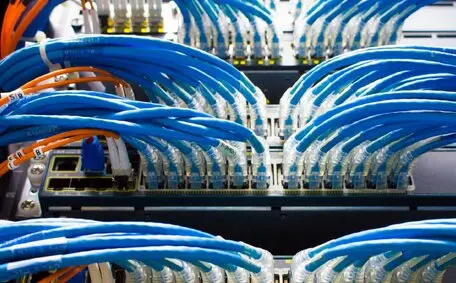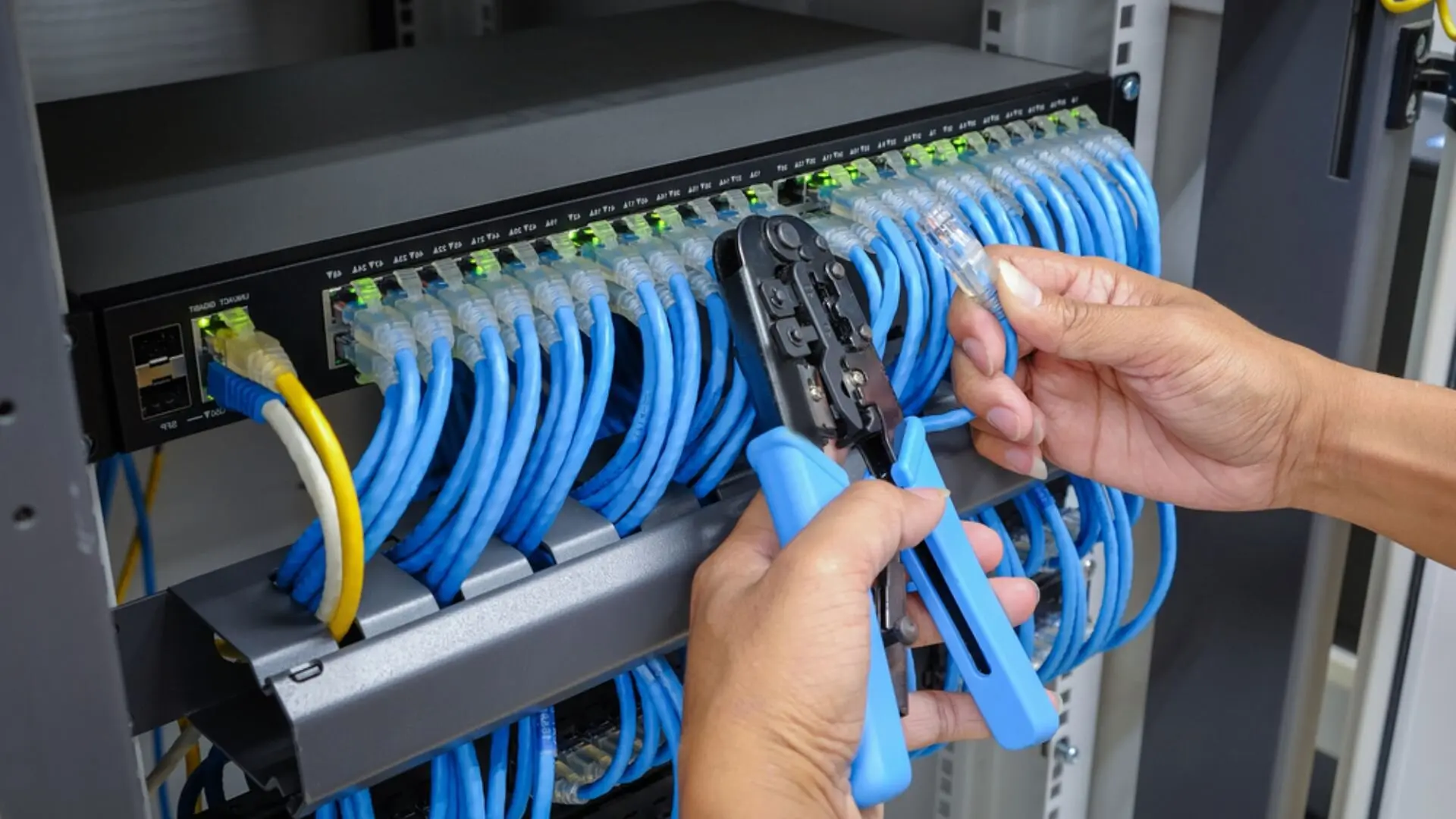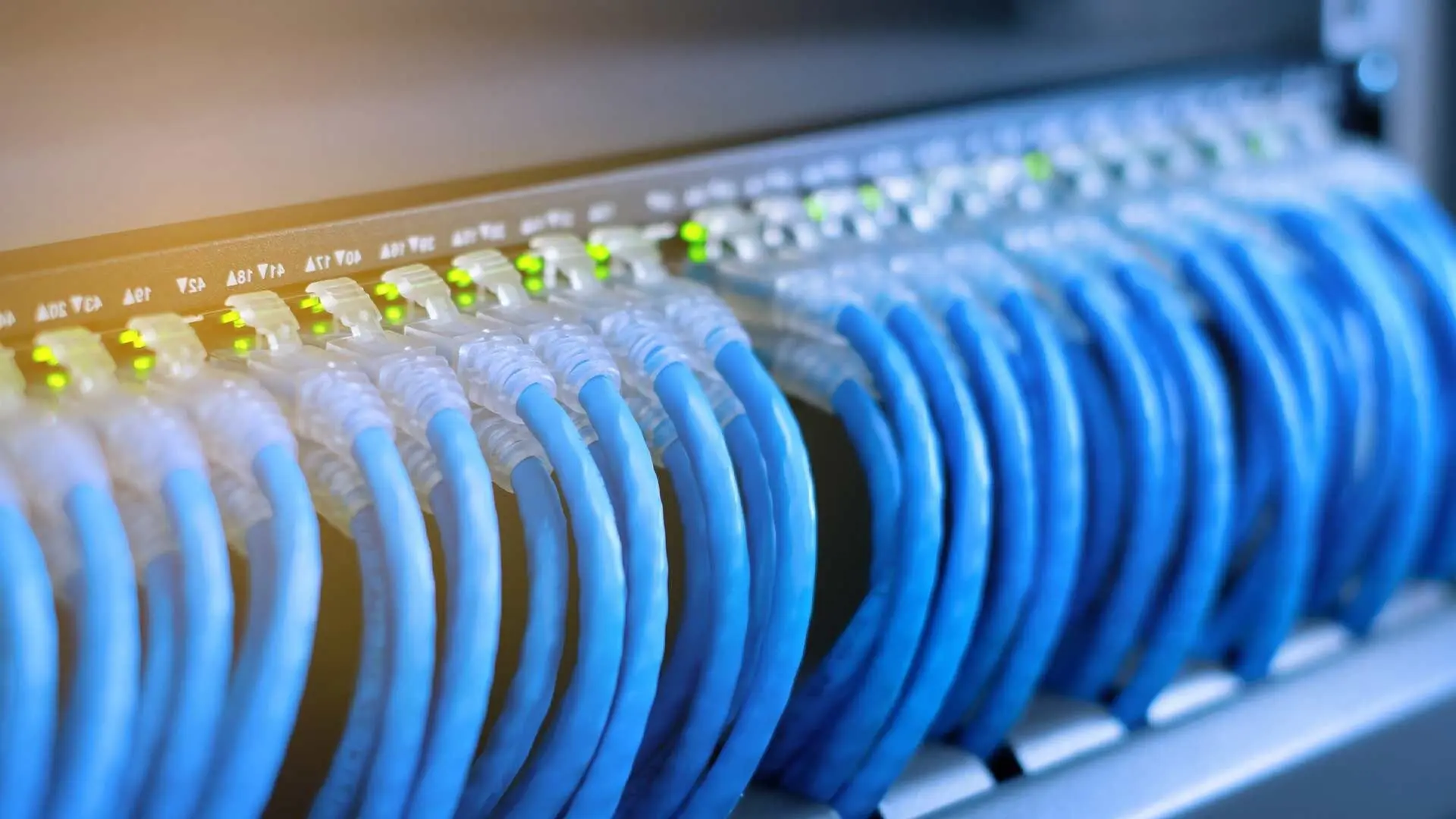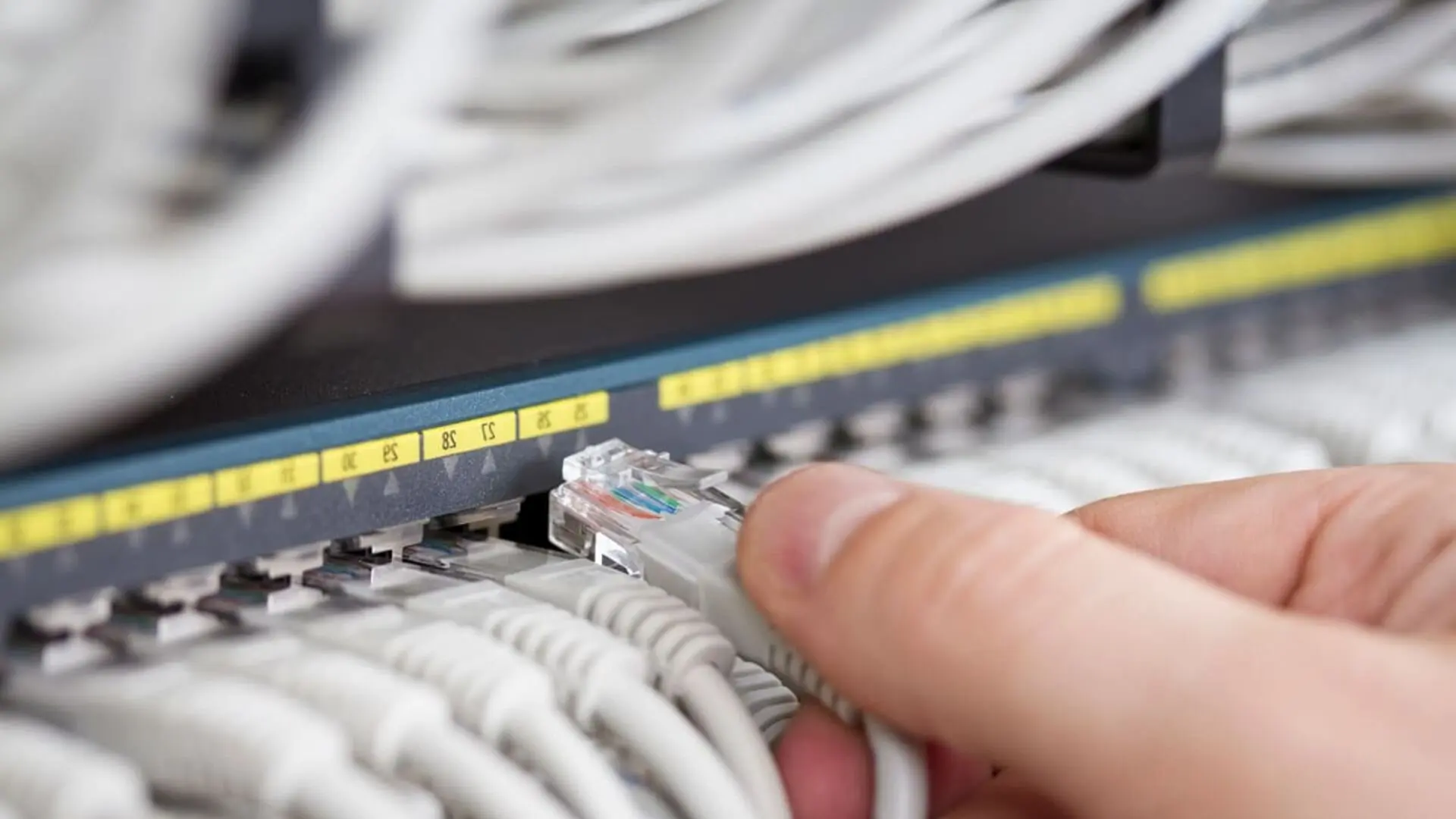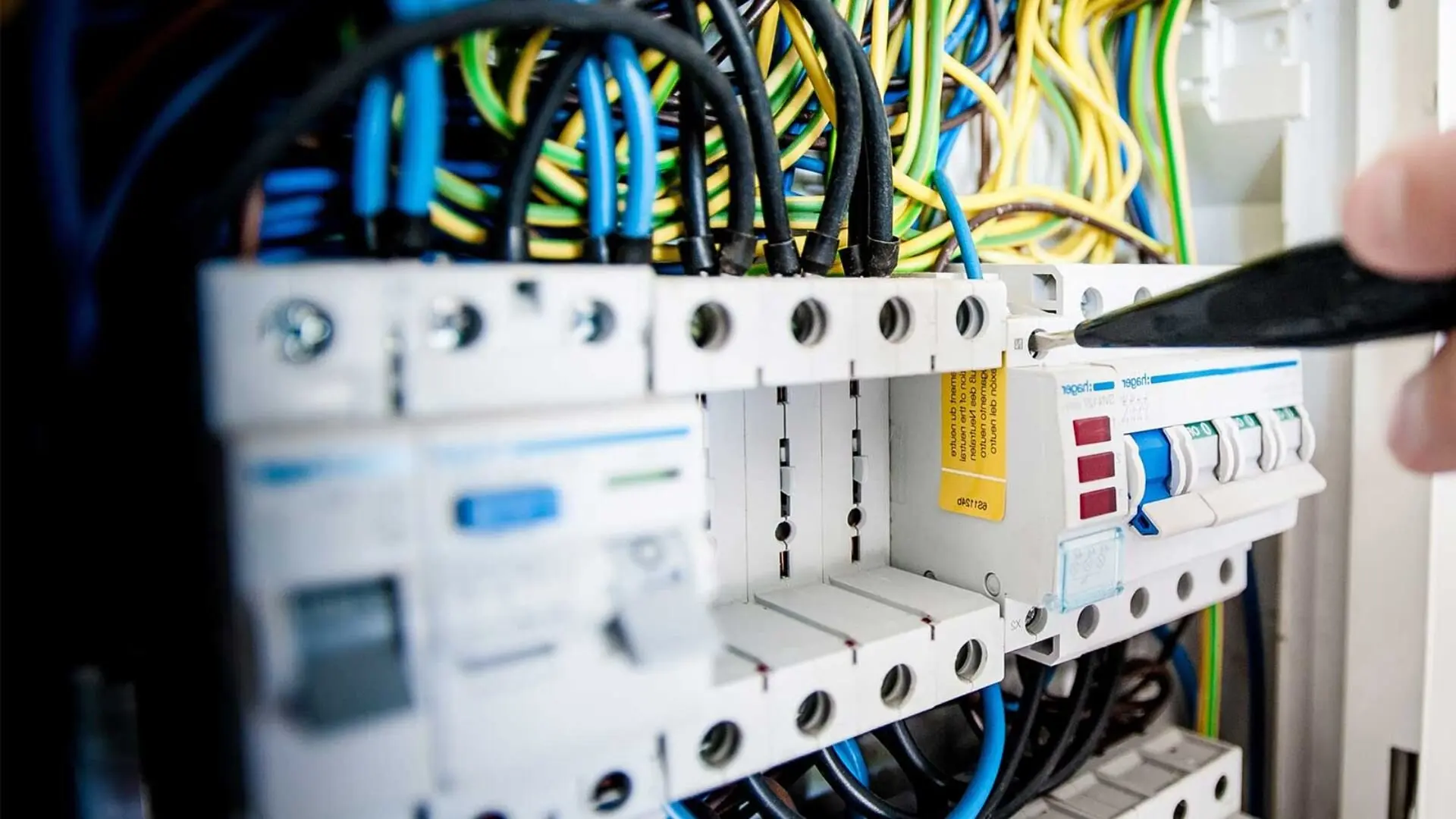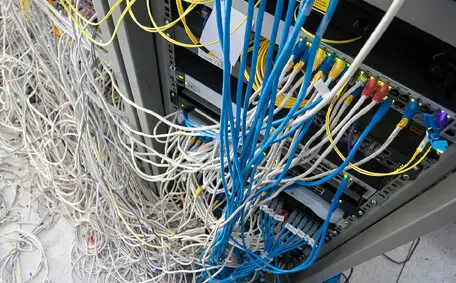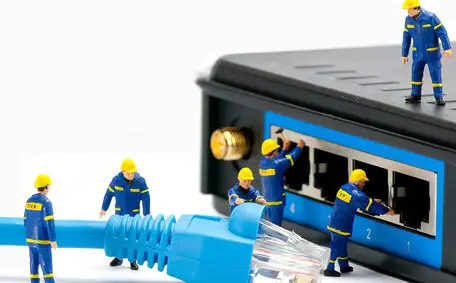A reliable and efficient data network is crucial for businesses and individuals in today’s interconnected world. Whether setting up a new office space or upgrading your home network, selecting the correct cabling for your data points is paramount. This article will guide you through choosing the most suitable cabling to ensure a seamless and robust internet connection.
Several options are available regarding data cabling, each with advantages and considerations. Two common types of cabling widely used for data points are Ethernet cables and fibre optic cables. Ethernet cables are the go-to choice for most installations, offering a cost-effective solution supporting high-speed data transmission. On the other hand, fibre optic cables provide unparalleled bandwidth and are ideal for long-distance and high-demand applications.
One crucial factor to consider when selecting the appropriate cabling is the level of electrical interference in your environment. Electrical interference can negatively impact data transmission and compromise network performance. Therefore, choosing cabling that provides adequate shielding against electromagnetic interference (EMI) and radio frequency interference (RFI) is essential.
In addition to electrical interference, other factors to consider include bandwidth requirements, cable length, and compatibility with existing equipment. By carefully evaluating these factors, you can ensure optimal network performance and future scalability.
Throughout this article, we will delve into the various types of cabling available, provide expert tips for making an informed decision, and ultimately guide you towards choosing the correct cabling for your data points. So, let’s explore the world of data cabling and network cables and their importance in establishing a reliable and efficient data network.
Understanding Data Cabling
![2023 07 Fixing Network Cabling Fixing Network Cabling]()
Data cabling is central to creating a dependable wired or wireless network. It involves installing physical cables that link various network devices and support data transmission. Whether you are building a small office network or a more extensive enterprise setup, grasping the basics of data cabling is key to creating a strong and efficient network.
One important element in data cabling is understanding cable runs. Cable runs are the lengths of cables needed to connect each device, forming a complete network layout. By planning and organising these cable runs carefully, you can assure efficient connectivity, reduce signal loss, and boost data transfer rates. Even as wireless networks become more common, data cabling remains a reliable solution for connectivity.
Unlike wireless connections, which can suffer from interference and slower speeds, data cables provide a stable and reliable connection. They’re particularly vital for essential tasks like IP phone systems, where maintaining communication without interruptions is crucial.
Among data cabling options, Cat 5e and Ethernet are popular picks. Cat 5e cables excel with high-speed, up to 1000 Mbps data transmission. Meanwhile, Ethernet cabling includes categories like Cat 5e, Cat 6, and Cat 6a, offering greater bandwidth for quicker, more dependable data transmission.
Electromagnetic interference (EMI) is a common challenge in data cabling installations. EMI can arise from external sources such as power lines or internal sources within the network environment. To mitigate the impact of EMI, it is crucial to use properly shielded data cables that minimise the risk of signal degradation and ensure optimal data transmission.
Data cabling can utilise two main types of cables: stranded cables and solid cables. Stranded cables are flexible and ideal for applications that require frequent movement or flexibility. Solid cables, on the other hand, are more rigid and provide better performance over longer cable runs.
What Should You Consider?
Choosing the right cabling for your data points involves several factors to guarantee top network performance and reliability. By considering these factors, you can ensure you pick the most suitable cables. Let’s delve into the crucial elements you should consider.
![2023 07 Blue Internet Cabling Blue Internet Cabling]()
Bandwidth Requirements
It’s crucial to assess your bandwidth requirements to choose the right cabling for your data points. If you’re using demanding applications or need high-speed data transfers, like for Gigabit Internet or streaming content on a Smart TV, you’ll want cables that can handle those demands. Ethernet cables, particularly Cat 6a, are well-suited for high-bandwidth uses.
Wireless Connectivity
Evaluate whether wireless technologies can meet your network needs. While wireless connections offer convenience and flexibility, they may not always provide the same network stability and performance as wired connections. Opting for internal wired connections might be preferable if you require a reliable and consistent connection, especially for critical applications or devices on the same network.
Network Infrastructure
Think about your network’s overall design. Structured cabling offers an organised and standard method of managing networks while allowing scalability. If you’re planning a large or complex local area network (LAN), structured cabling can simplify your installation and maintenance tasks.
Data Transfer Speed
Your choice of cables can dramatically affect data transfer speeds. Higher-grade options like Cat 6a, are built to support faster data rates and reduce data loss or latency. If you expect to need higher data speeds later or want reliable connections with low electrical resistance, choosing the right cable standard is essential.
Compatibility
Consider the compatibility of the cabling with your existing equipment. Ensure your cabling is compatible with network devices like routers, switches, and other peripherals. This compatibility will ensure seamless integration and optimal performance within your network environment.
Environmental Factors
Consider any environmental factors that could affect your cabling. For instance, shielded cables can help mitigate signal degradation and provide a more reliable connection if your data points are located in an area with electrical interference. Similarly, if you’re in a situation where running new cables is challenging, powerline adapters can utilise existing internal wires to establish network connectivity.
By carefully considering these factors, including bandwidth requirements, compatibility, environmental conditions, and the specific needs of your network infrastructure, you can make an informed decision when choosing the correct cabling for your data points. This will ensure a solid foundation for your network, minimising the risk of slower connections, signal loss, and potential disruptions.
Expert Tips for Choosing Cabling
When it comes to choosing the correct cabling for your data points, there are several expert tips you should consider. These tips will help you make an informed decision and ensure reliable performance and optimal connectivity. Let’s explore these expert recommendations for selecting the appropriate cabling:
![2023 07 Plugging In Network Cabling Plugging Network Cabling]()
Tip 1: Consider Twisted Pair Cables
Twisted pair cables are popular for data cabling. They consist of pairs of twisted insulated copper wires, which help minimise crosstalk and noise interference. When selecting cabling, opt for twisted pair cables as they provide better signal integrity and reduce the risk of data corruption.
Tip 2: Thicker Wires For Longer Runs
Consider using thicker wires if data points require longer cable runs. Thicker wires have lower electrical resistance, which helps maintain signal strength over longer distances. This is particularly important when transmitting data over extended cable runs to ensure reliable performance.
Tip 3: Plan For Future Bandwidth Needs
Anticipate future bandwidth requirements when choosing your cabling. Opt for cables offering extra bandwidth capacity to accommodate network growth and faster connections. This foresight will prevent the need for premature upgrades or cabling replacements down the line.
Tip 4: Consider the Maximum Cable Length
Each type of cabling has a maximum length limitation. Be aware of this limitation and ensure your cable runs do not exceed the specified full length. Exceeding the total length can lead to signal degradation and slower connections.
Tip 5: Evaluate Noise Interference
Assess the level of noise interference in your environment. If your data points are in an area prone to electrical or electromagnetic interference, consider using shielded cables. Shielded cables protect against external noise sources, ensuring more reliable performance.
Tip 6: Consider Mobility and Portable Devices
If mobile devices require flexibility and portability, consider using patch cables or shorter network cabling to connect to data points. This allows for easy movement and flexibility without compromising network connectivity.
By following these expert tips, considering factors such as twisted pair cables, thicker wires for longer runs, planning for future bandwidth needs, evaluating noise interference, and considering the needs of mobile devices, you can make an informed decision when selecting cabling for your data points. These considerations will contribute to a reliable and efficient network infrastructure, enabling faster connections and ensuring optimal performance throughout your network.
The Importance Of Choosing The Right Network Cable
The appropriate cabling for your data points is crucial for establishing a reliable and high-performing network. By considering factors such as connection type, performance, and future-proofing, you can ensure optimal connectivity and faster speeds throughout your network. Let’s recap the key points and explore the final considerations when choosing the proper cabling.
![2023 07 Testing Network Electrical Supply Testing Network Electrical Supply]()
When deciding between Wi-Fi and wired connections, consider the overall performance you require. While Wi-Fi offers convenience and mobility, wired connections, such as Ethernet connections, provide faster and more reliable speeds, especially for data-intensive tasks.
Twisted pairs, like Cat6 cables, are popular due to their industry-standard performance and resistance to signal loss. These cables are designed to transmit data over longer distances without significant degradation, ensuring consistent and reliable connectivity.
Keep in mind the future needs of your network when selecting cabling. Even higher-grade cables may come at a higher price; they can provide better overall performance and ensure compatibility with future devices and technologies.
Making Informed Decisions For Data Points Cabling
Whether connecting computers and devices or ensuring a seamless internet experience, the proper cabling will enable you to establish a robust network infrastructure. When deciding, consider factors such as the required data speed, distance limitations, budget constraints, and future scalability.
Ready to enhance your network performance? Contact us at Bright Force Electrical for professional data points and cabling services. Our experienced team will ensure the right cabling solutions are implemented, optimising your data connections for faster speeds, higher performance, and seamless connectivity. Future-proof your network today by calling or requesting a quote on our website. Experience the difference between reliable and efficient cabling for all your data points.
Remember, a strong foundation starts with the proper cabling. Connect with us now to unleash the full potential of your network!
